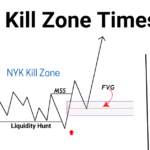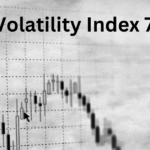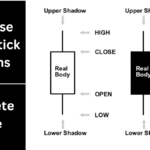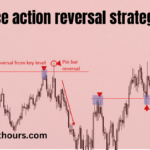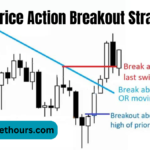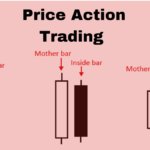The Forex market is a decentralized global marketplace where currencies are traded. It operates 24 hours a day, five days a week, facilitating international trade and investment by enabling currency conversion. The continuous operation is divided into four main trading sessions – the Sydney session, the Tokyo session, the London session, and the New York session. These sessions correspond to the principal financial markets operating in each region.
Traditionally, the market was segmented into three major trading sessions – Asian, European, and North American. The distinction of these sessions into four, with the inclusion of the Sydney session, acknowledges the growing importance of the Australian market and the Asia-Pacific region in the global Forex landscape. This segmentation reflects the start and close of business hours in these major financial markets, allowing for greater participation from traders across the globe.
Traders around the world participate in these sessions in various ways, including through banks, financial institutions, brokers, and trading platforms. The internet and electronic trading have democratized access, enabling individual traders and investors to participate in Forex trading from anywhere in the world, at any time during these sessions. This accessibility supports the continuous, 24-hour nature of the Forex market, accommodating a diverse range of participants across different time zones.
Sydney Trading Session
The Sydney session marks the start of the Forex trading day and is named after Sydney, a big city in Australia. Australia is located in the southern part of the world and is surrounded by the Pacific and Indian Oceans.. It’s important in the world of money trading because it’s one of the first places where the Forex market opens each day.
This session begins trading because Australia is close to the International Date Line, making it one of the first countries to start a new day. So, when people in Sydney start trading, it’s like the starting signal for Forex markets all around the world.
Traders from Australia and New Zealand are the first to trade, mainly focusing on their currencies like the Australian Dollar and the New Zealand Dollar.
Sydney Forex trading session Time
| Session | Opening Time (GMT) | Closing Time (GMT) | Opening Time (EST) | Closing Time (EST) |
|---|---|---|---|---|
| Sydney | 22:00 | 06:00 | 5:00 PM | 1:00 AM |
Please note that the EST times are based on the standard time difference of GMT-5 hours. Daylight saving time could affect these EST times, making adjustments necessary during certain periods of the year.
What are the most traded Currency in This Session
During the Sydney session, the most traded currencies are those linked to the Asia-Pacific region, with a particular emphasis on the Australian Dollar (AUD) and the New Zealand Dollar (NZD). Key currency pairs that see significant trading volume during this session include:
- AUD/USD (Australian Dollar/US Dollar)
- NZD/USD (New Zealand Dollar/US Dollar)
- AUD/JPY (Australian Dollar/Japanese Yen)
- NZD/JPY (New Zealand Dollar/Japanese Yen)
These pairs are actively traded during the Sydney session due to economic releases and news from Australia and New Zealand, which can have a substantial impact on the value of these currencies.
Tokyo (Asian)Trading Session Time
The Tokyo trading session session is an essential part of the global currency exchange market. It’s a time when a lot of trading happens, mainly focusing on currencies from Asia. Tokyo is important because it’s a major financial center in Asia, where many transactions happen, especially with currencies from this region. For people who trade currencies, this time is especially important if they are dealing with the Japanese Yen (JPY), which is one of the most traded currencies during these hours.
The Tokyo session starts right after the Sydney session, making it the second market to open in the day. This is the beginning of the trading day in Asia. The order in which these markets open is very important. It helps shape how trading happens in this region and can affect trading in other parts of the world later in the day. This is especially true when big changes or important news comes out during the Tokyo session.
Regarding its position in time, Tokyo is located in the Japan Standard Time (JST) zone, which is ahead of the Greenwich Mean Time (GMT) by 9 hours.
Opening and closing hours for the Tokyo session can vary due to daylight saving time changes in other parts of the world. However, Japan does not observe daylight saving time, so the local time for the Tokyo session remains consistent throughout the year. For traders in different time zones, it’s essential to adjust the Tokyo session hours to their local time, particularly in Eastern Standard Time (EST) and Greenwich Mean Time (GMT).
| Time Zone | Opening Hours | Closing Hours |
|---|---|---|
| EST (Winter) | 7:00 PM | 4:00 AM |
| GMT (Winter) | 12:00 AM | 9:00 AM |
| EST (Summer) | 8:00 PM | 5:00 AM |
| GMT (Summer) | 1:00 AM | 10:00 AM |
The above table show the opening and closing time of Asian trading session both in EST and GMT.
What are the most traded currencies during the Tokyo session?
During the Tokyo session, major trading pairs typically involve the Japanese Yen, given its prominence in the Asian market. Some of the most actively traded pairs in this session include:
- USD/JPY (U.S. Dollar/Japanese Yen)
- EUR/JPY (Euro/Japanese Yen)
- AUD/JPY (Australian Dollar/Japanese Yen)
- NZD/JPY (New Zealand Dollar/Japanese Yen)
These pairs are closely watched for their volatility and liquidity during the Tokyo session, providing opportunities for traders to capitalize on movements driven by Asian market activities and economic announcements.
When is the Best timing for trading during the Asian session?
London Session
The London trading session is one of the most significant sessions in the forex market due to its strategic timing and the fact that London is one of the largest financial centers in the world.
High Liquidity and Volatility: The London session is known for its high liquidity and volatility, making it an attractive trading window for forex traders. High liquidity means that large volumes of currencies can be bought and sold without significantly affecting the exchange rate, which is beneficial for traders looking to execute large trades.
Overlap with Other Sessions: A key feature of the London session is its overlap with the Asian session in the morning and the New York session in the afternoon. This overlap increases liquidity and volatility, offering more opportunities for traders to enter and exit trades.
Center for Forex Trading: London has historically been a major center for foreign exchange, and a large percentage of forex transactions take place during the London session. This concentration of trading activity makes it an important time for price movements and setting trends in currency pairs.
When does the London Session open and close?
Table below summarizing the opening and closing times of the London trading session in both Eastern Standard Time (EST) and Greenwich Mean Time (GMT):
| Time Zone | Standard Time | Daylight Saving Time |
|---|---|---|
| EST | Opens: 3:00 AM, Closes: 12:00 PM | Opens: 4:00 AM, Closes: 1:00 PM |
| GMT | Opens: 8:00 AM, Closes: 5:00 PM | Opens: 7:00 AM, Closes: 4:00 PM |
Please note that daylight saving time adjustments can cause variations, so it’s a good idea to check for any local time changes that might affect these hours.
Best Time to Trade in London Session
The best time to trade during the London session is typically during its early hours, especially when it overlaps with the end of the Tokyo session (approximately 3 AM to 4 AM Eastern Standard Time) and the beginning of the New York session (approximately 8 AM to 12 PM Eastern Standard Time). These overlap periods usually see the highest liquidity and volatility, offering more opportunities for trading.
Best Pair to Trade During London Session
The best currency pairs to trade during the London session are typically those involving the Euro (EUR), British Pound (GBP), and the Swiss Franc (CHF), as these currencies are most active during European business hours. Popular pairs include:
- EUR/USD: The Euro and the US Dollar pair is the most traded currency pair in the world and sees significant movement during the London session due to the overlap with the New York session.
- GBP/USD: The British Pound and the US Dollar pair, also known as “Cable,” is another highly volatile pair during the London session, with movements often driven by UK economic reports and news.
- EUR/GBP: The Euro and British Pound pair is particularly influenced by economic news from the Eurozone and the UK, making it an interesting pair to trade during the London session.
- Other pairs involving European currencies and major currencies like the Japanese Yen (JPY) and the Australian Dollar (AUD) can also provide opportunities, especially during economic news releases or significant geopolitical events.
Traders should always be aware of the economic calendar and news events, as these can greatly influence currency movements.
New York Session
The New York trading session is a big deal in the trading world, and there are some good reasons for that. First off, New York is like the beating heart of the financial world. A lot of big banks and financial companies are based there, so when the New York market is open, a huge amount of money is being moved around.
One of the biggest reasons the New York session is so important is because of the time it happens. It overlaps with the London session, which is another major trading hub. This overlap means lots of traders are active at the same time, making it easier to buy and sell because there are more people to trade with. This is what traders call ‘high liquidity’ – it’s like being at a busy market where you can easily buy or sell what you want.
During the New York session, a lot of important news from the U.S. gets released, like reports on how the economy is doing or decisions on interest rates. These kinds of news can really shake things up, making prices move faster and creating opportunities for traders.
What time does New York session start and end?
The below table explain the opening and closing time of this session.
| Time Zone | Standard Time | Daylight Saving Time |
|---|---|---|
| EST | Opens: 8:00 AM, Closes: 5:00 PM | Same as Standard Time |
| GMT | Opens: 1:00 PM, Closes: 10:00 PM | Opens: 12:00 PM, Closes: 9:00 PM |
What is the best time to trade during the New York session?
The magic hours are usually at the start of the session, from 8:00 AM to 12:00 PM EST. This is when it overlaps with the London session, so there’s a lot of action. Prices can move quite a bit, which can be good for making trades.
What Currency Pair Perform Best in this Session?
As for the best currency pairs to trade, you’ll want to look at pairs that include the US dollar (USD). Since the New York session is all about the U.S., pairs like EUR/USD (Euro and US dollar), GBP/USD (British pound and US dollar), and USD/JPY (US dollar and Japanese yen) are often more active and can have bigger price moves.
New York trading session is a key time when lots of traders are buying and selling, important news comes out, and you can trade with some of the most popular currency pairs. It’s like a busy marketplace where there’s a lot of buying and selling going on, and if you know what you’re doing, there can be good opportunities to make some trades.
